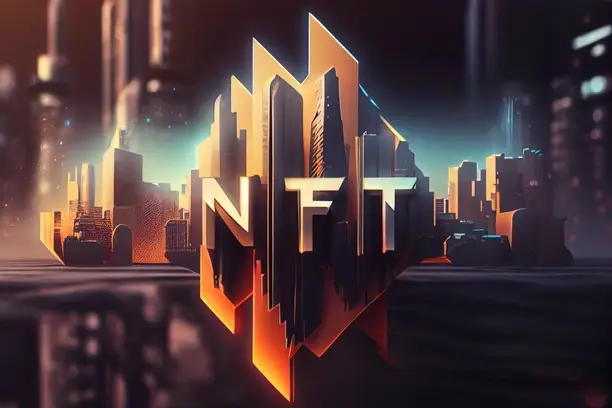The Web3 Wallet is a crucial tool in the decentralized financial world that not only enables users to manage cryptocurrencies, but also interact with various decentralized applications (dApps). This article will dive into the basics of Web3 Wallet and explore its benefits and how it can be used to enhance the security and convenience of your digital assets. If you are interested in cryptocurrency or blockchain technology, understanding the Web3 wallet is a crucial step in this field.

What is Web3 Wallet?
Web3 Wallet is a digital wallet designed for blockchain and decentralized applications (dApp). Unlike traditional online bank accounts, Web3 Wallet's main feature is decentralization. It allows users to manage various crypto assets (e.g. Bitcoin, Ether and other tokens) and conduct peer-to-peer transactions. web3 wallet does not need to rely on a centralized third party, all operations are secured by blockchain technology, which allows users to have full control over their assets.
The core functions of Web3 Wallet include: cryptocurrency storage, transaction signature, smart contract interaction, etc. The most popular Web3 Wallets include Metamask, Trust Wallet, and Coinbase Wallet. The most common Web3 wallets include Metamask, Trust Wallet, and Coinbase Wallet. These wallets bridge the Web3 world by not only supporting the management of cryptocurrencies, but also interacting directly with various decentralized applications.
Web3 Purse Features
1. cryptocurrency storage and management
The most basic function of Web3 Wallet is to store and manage users' cryptocurrencies. Users can store digital assets such as Bitcoin, Ether, and USDT in their wallets and check the balance at any time. The private keys to these wallets are completely controlled by the user and there is no need to trust third-party organizations, which is part of its decentralized nature.
2. Support for decentralized transactions
Web3 Wallet also helps users to make decentralized transactions, which is one of the core features of blockchain. Users can trade cryptocurrencies on a decentralized exchange (DEX) without relying on a centralized exchange. This protects the privacy and security of the transaction process.
3. Smart Contract Interaction
Web3 wallets can interact with smart contracts, which is one of the core applications of blockchain technology. Users can use the wallet to execute contracts on smart contract platforms such as Ether, participate in Decentralized Finance (DeFi) applications, games, and more. Most of these interactions are automated and highly transparent.

4. Support for NFT (non-homogenized token) management
With the rise of the NFT market, Web3 Wallet also supports users to manage NFTs. Users can easily store purchased NFTs in the wallet and participate in NFT trading or presentation. The wallet can effectively help to manage different types of NFT assets.
Advantages of Web3 Wallet
1. Decentralization and self-ownership
One of the biggest advantages of Web3 Wallet is its decentralized nature. Users have full control of their own assets and do not need to rely on banks or third-party financial institutions. This design makes assets more private and secure and avoids the risk of freezing or scrutinizing funds in traditional financial systems.
2. High level of security
Web3 wallets usually provide a private key management feature to ensure that only the owner of the wallet is able to manipulate its assets. The private key is the only way to unlock the wallet and is not stored on any server, making it extremely difficult to hack. Many Web3 wallets also support multi-signature mechanisms to further enhance the security of the assets.
3. Cross-platform compatibility
Many Web3 wallets support multiple blockchains and can be used on different platforms (e.g. desktop and mobile). For example, Metamask supports both Ether and blockchains such as Binance Smart Chain, allowing users to seamlessly switch between multiple platforms and facilitate cross-chain transactions.
4. Convenient DeFi and NFT functions
Web3 Wallet makes it easy for users to participate in Decentralized Finance (DeFi) projects such as lending, liquidity provisioning and revenue farming. Users can also use the Web3 Wallet for NFT trading, casting and collecting, enabling deeper interaction with the blockchain world.
How to choose a Web3 Wallet?
Choosing the right Web3 wallet depends on several factors:
1. Supported blockchain
Different Web3 wallets may support different blockchains. If you mainly use a certain blockchain (e.g. Ether, Solana, Binance Smart Chain, etc.), it is more convenient to choose a wallet that supports that blockchain.
2. Security
Security is one of the most important considerations when choosing a Web3 wallet. Make sure the wallet offers private key control and backup features, and supports security hardening options such as two-step authentication (2FA) or hardware wallets (e.g. Ledger, Trezor).
3. Utilization experience
The interface of the wallet should be simple and intuitive, suitable for both novice and experienced users. A good user experience will help users to easily manage assets, trade and interact with the dApp.
4. Customer support and community
Choosing a wallet with good customer support is also very important. Quality customer service and an active community can help users during the process and enhance the overall experience.
How to trade with Web3 Wallet?
Trading with Web3 Wallet is very easy, here are some basic steps:
1. installing and setting up the wallet
Choose and download a Web3 wallet (e.g. Metamask, Trust Wallet, etc.) according to your needs. After installation, you will need to create a new wallet and set a secure password or passphrase. Be sure to keep the passphrase safe as it is the only way to recover your wallet.
2. Rechargeable cryptocurrency
After setting up your wallet, you need to deposit some cryptocurrency into it. You can buy and transfer to your Web3 wallet through an exchange, or transfer from another wallet.
3. Initiation of transactions
Select the "Send" or "Transfer" function in Wallet, enter the recipient address and the transfer amount. When sending a transaction, you'll need to sign to verify that you initiated the action. Make sure the transaction details are correct and confirm the submission.
4. transaction validation and monitoring
Once a transaction is submitted, the blockchain network confirms the transaction. You can check the status of the transaction in your wallet and use the blockchain browser to view the details of the transaction.
Conclusion
Web3 Wallet is indispensable for participants as an important tool for cryptocurrency and blockchain technology. Through Web3 wallets, users can easily manage digital assets, interact with decentralized applications, and enjoy the autonomy and security that blockchain brings. With the development of Web3 technology, these wallets will become more and more powerful and become a financial tool that cannot be ignored in the digital age.














